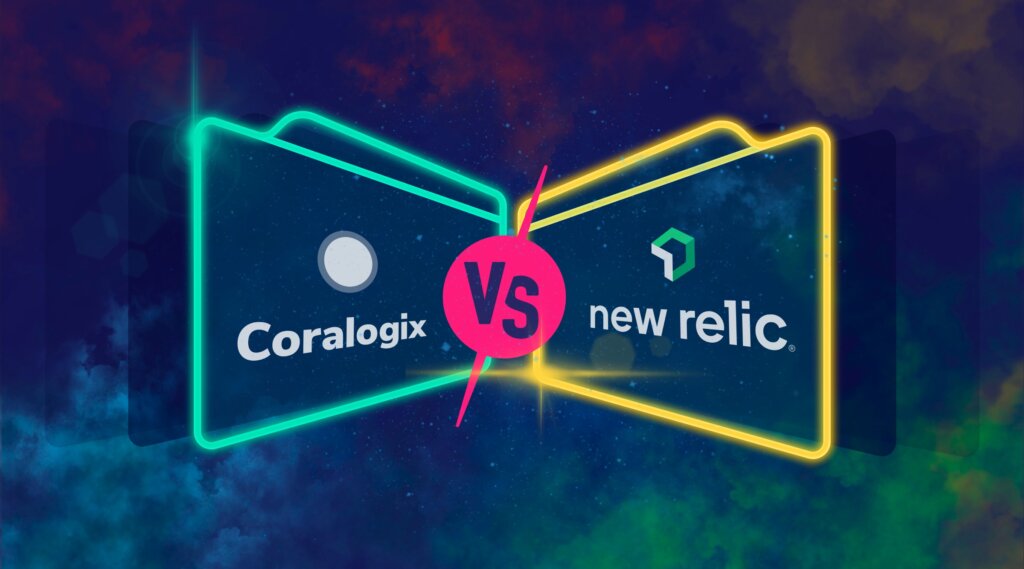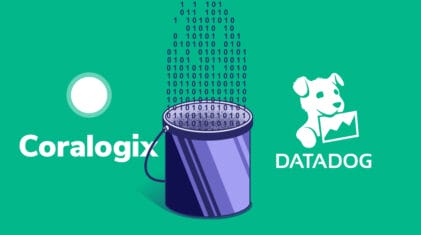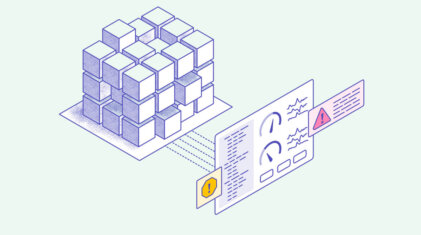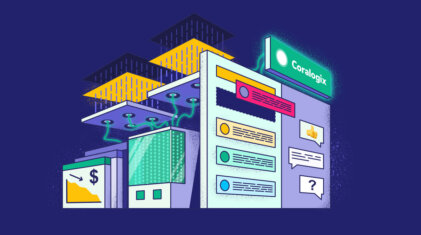Long-Term Storage: Coralogix vs. DataDog
Long-term storage, especially for logs, is essential to any modern observability provider. Each vendor has their own method for handling this problem. While there are numerous…
Whether you are just starting your observability journey or already are an expert, our courses will help advance your knowledge and practical skills.
Expert insight, best practices and information on everything related to Observability issues, trends and solutions.
Explore our guides on a broad range of observability related topics.


More platform teams owning multi-tenant systems need a full-stack observability solution that aggregates volumes of data into logs, metrics and traces. In tandem, there’s a growing number of major players in the observability industry, including New Relic.
This post will compare some key features between Coralogix vs. New Relic. We will also go over what customers are looking for when choosing a complete observability platform.
Coralogix and New Relic both support ingesting logs, metrics, and traces. These three data types are common across almost all SaaS observability platforms. It’s no surprise that they’re well covered in both offerings.
Coralogix and New Relic ingest logs, metrics, and traces from many different sources. That being said, Coralogix excels at bringing all this data together in a single, cohesive journey, which allows users to sail between data types seamlessly.

A significant difference between Coralogix and New Relic is Coralogix Flow Alerts. Flow Alerts allow users to orchestrate their logs, metrics, traces, and security data into a single alert that tracks multiple events over time. Coralogix’s unique offering enables customers to create alerts that describe the complete picture of their system.
Our expert team ensures a smooth migration of your alerts, dashboards, and more
Both Coralogix and New Relic utilize machine learning for alarms and for automatic correlation between events. For example, if an alarm triggers because of a flow anomaly, the Coralogix platform will automatically highlight other anomalies that occurred in the same timeframe.
While New Relic offers a similar feature, Coralogix gives customers an extra feature that enables customers to instantly cluster similar logs together into a so-called template. Known as Loggregation, the feature enables Coralogix users to jump from millions of individual logs to only a handful of templates, massively reducing the size of the haystack and aiding engineers to prioritize their attention.
While Coralogix offers both SIEM and CSPM solutions for Coralogix customers, New Relic offers neither of these features. Though some customers do use New Relic features to create a SIEM-like experience, New Relic does not have any documentation or solution outlines that describe itself as a SIEM provider.
Coralogix offers a sophisticated CSPM and SIEM solution, which unlocks true DevSecOps, by bringing security insights alongside general observability. This encourages left shifting of responsibilities, as well greater visibility of vital information security goals.
There is no bigger difference between Coralogix vs New Relic than in archiving. For New Relic customers, archiving in a remote location, such as S3, is only available for enterprise customers. The New Relic Enterprise Plan requires users to ingest a lot of data, and subsequently spend a large amount of money.
All Coralogix customers, regardless of ingestion amounts, can remotely archive their data into S3. Coralogix does not tier its solution so that when customers ingest their data into the platform, they immediately gain access to every single platform feature.
Only Coralogix is capable of performing remote queries in seconds on archived, unindexed data. In order for data to be accessible for New Relic customers, the data needs to be indexed, resulting in large cost implications. Coralogix enables infinite retention with unlimited access, at no cost per query, through its archive query capability.

Coralogix users start by indexing the majority of their data, gradually transferring more data to the archive. Customers know that data can be queried in seconds, at no additional cost.
Coralogix’s cost optimization functionality means customers can store the majority of their data in S3, and pay at most $0.023 / GB for storage. Coupled with the Compliance ingest costs, which are $0.17 / GB, Coralogix makes a per GB cost for ingest and storage of $0.193 / GB for the first month and $0.023/GB every month after that. The price is a fraction of what anyone else on the market is offering, seamlessly allowing customers to cut costs between 40% and 70%.
Compared to New Relic, which requires a $0.50/GB ingest charge, their customers who wish to archive data in S3, a $0.523/GB cost for the first month, is nearly 3x as expensive. The price doesn’t factor in the cost of re-ingestion if New Relic users seek to access the same data again.
For New Relic pricing, all data (logs, metrics and traces) are charged at $0.30/GB ingested. However, New Relic also charges $49 per user, per month, which adds a layer of complexity and greatly hampers the scalability of the New Relic solution. For Coralogix, there are very affordable rates for each data type ranging from $0.05/GB for all metrics to $1.15/GB for fully indexed logs in hot storage. Furthermore, Coralogix, only charges for ingestion with no extra costs for users (many customers have hundreds of users)
Moreover, since New Relic is a tiered solution, it is not abundantly clear which features are available (like archiving and faster support times) when customers ingest data. In contrast, Coralogix is not a tiered solution, and all features are available to all customers, regardless of spend.
Our expert team ensures a smooth migration of your alerts, dashboards, and more
There is no competition in the arena of customer support. The shortest response time SLA that New Relic offers to its enterprise customers is three hours. In contrast, Coralogix boasts a 30 second median response time and offers customer support to all of its users, not just those paying for the premium support. A no-tier model means Coralogix offers, by far, a complete customer support on the market.
While New Relic has some great features, an inefficient pricing model and basic features like archiving hidden behind higher ingestion costs make it a more difficult sell. In comparison to Coralogix, with 15 second support, remote archive and archive query, coupled with the simplest pricing model on the market, the decision is clear.
Check out our analysis on Datadog pricing.

Long-term storage, especially for logs, is essential to any modern observability provider. Each vendor has their own method for handling this problem. While there are numerous…

Like cloud-native and DevOps, full-stack observability is one of those software development terms that can sound like an empty buzzword. Look past the jargon, and you’ll…

SaaS Observability is a busy, competitive marketplace. Alas, it is also a very homogeneous industry. Vendors implement the features that have worked well for their competition,…